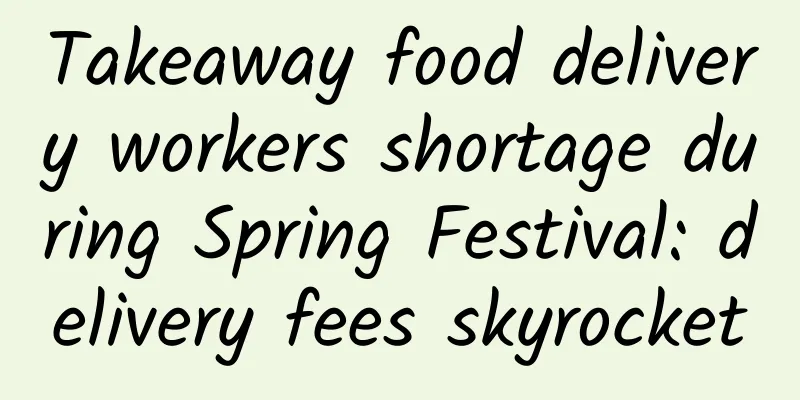ReactiveCocoa self-description: working principle and application

|
ReactiveCocoa (RAC) is an Objective-C framework inspired by functional reactive programming. If you are already familiar with functional reactive programming or know some of the basic premises of ReactiveCocoa, check out the Documentation folder for an overview of the framework, which contains some in-depth information about how it works. What is ReactiveCocoa? The ReactiveCocoa documentation is well written and covers in detail what RAC is and how it works. If you want to learn a little more, we recommend these resources: Introduction When to use ReactiveCocoa Framework Overview Basic Operators Header documentation Previously answered Stack Overflow questions and GitHub issues The rest of the Documentation folder Functional Reactive Programming on iOS(eBook) If you have any other questions, feel free to file an issue. file an issue. introduce ReactiveCocoa is inspired by functional responsive programming. Rather than using mutable variables which are replaced and modified in-place, RAC provides signals (expressed as RACSignal) to capture current and future values. By connecting, binding, and responding to signals, software can be written without having to continually observe and update values. For example, a text field can be bound to its latest state even as it changes, without having to write extra code to update the text field’s state every second. It’s a bit like KVO, but it uses blocks instead of overriding -observeValueForKeyPath:ofObject:change:context:. Signals can also represent asynchronous operations, a bit like futures and promises. This greatly simplifies asynchronous software, including network processing code. One of the main advantages of RAC is that it provides a single, unified approach to handling asynchronous behavior, including delegate methods, blocks callbacks, target-action mechanisms, notifications, and KVO. Here is a simple example:
Unlike KVO notifications, signals can be chained together and can operate simultaneously:
Signals can also be used to expose state. Instead of observing properties or setting other properties to reflect new values, RAC makes it possible to express properties through signals and operations :
Signals can be used in many places besides KVO. For example, they can also display button presses:
Or asynchronous network operations:
Signals can display timers, other UI events, or anything else related to time changes. For asynchronous operations using signals, more complex behaviors can be achieved by connecting and changing these signals. Work can be simply triggered when a set of operations completes:
Signals can execute asynchronous operations sequentially instead of nested block callbacks. This is very similar to futures and promises:
RAC can also easily bind the results of asynchronous operations:
This only describes what RAC can do, but it is difficult to explain why RAC is so powerful. Although it is difficult to explain RAC through this README, I will try to use less code, fewer templates, and better code to express it clearly. If you want more sample code, check out C-41 or GroceryList, which are real iOS apps written with ReactiveCocoa. For more information about RAC, see the Documentation folder. When to use ReactiveCocoa At first glance, ReactiveCocoa is very abstract, and it might be hard to understand how to apply it to a specific problem. Here are some common places where RAC is used. Handling asynchronous or event-driven data sources A lot of Cocoa programming focuses on responding to user events or changing application state. Writing code this way can quickly become a spaghetti-like mess with lots of callbacks and state variables. This pattern looks different on the surface, like UI callbacks, network responses, and KVO notifications, but actually has a lot in common. RACSignal unifies these APIs so that they can be combined and operated in the same way. Take the following code as an example:
…expressed in RAC like this:
Connection-dependent operations Dependencies are often used in network requests. When the next network request to the server needs to be built after the previous one is completed, you can look at the following code:
ReactiveCocoa makes this pattern particularly easy:
The above code can be easily cleaned up and optimized using synthetic signals:
Simplifying collection conversions Advanced features like map, filter, fold/reduce are sorely lacking in Foundation, leading to loop-heavy code like this:
RACSequence allows Cocoa collections to be manipulated in a unified way:
System requirements ReactiveCocoa requires OS X 10.8+ and iOS 8.0+. Introducing ReactiveCocoa To add RAC to your application: 1. Add the ReactiveCocoa repository as a submodule of your application repository. 2. Run script/bootstrap from the ReactiveCocoa folder. 3. Drag ReactiveCocoa.xcodeproj into your app’s Xcode project or workspace. 4. In the "Build Phases" tab of your application target, add RAC to "Link Binary With Libraries" On iOS, add libReactiveCocoa-iOS.a. On OS X, add ReactiveCocoa.framework. RAC must select "Copy Frameworks". If you don't have it, you need to select "Copy Files" and "Frameworks". 5. Add "$(BUILD_ROOT)/../IntermediateBuildFilesPath/UninstalledProducts/include" $(inherited) to "Header Search Paths" (this requires archive builds, but has no effect). 6. For iOS targets, add -ObjC to "Other Linker Flags" . 7. If you add RAC to a project (not a workspace), you need to add the appropriate RAC target to your application's "Target Dependencies". If you prefer to use CocoaPods, there are some generous third-party contributed ReactiveCocoa podspecs. To see a project using RAC, check out C-41 or GroceryList, which are real iOS apps written with ReactiveCocoa. Independent development If you are working with RAC in isolation rather than integrating it into another project, you will want to open ReactiveCocoa.xcworkspace instead of .xcodeproj. More information ReactiveCocoa is inspired by .NET's ReactiveExtensions (Rx). Some of the principles of Rx can also be used well in RAC. Here are some good Rx resources: Reactive Extensions MSDN entry Reactive Extensions for .NET Introduction Rx - Channel 9 videos Reactive Extensions wiki 101 Rx Samples Programming Reactive Extensions and LINQ RAC and Rx are both inspired by functional reactive programming. Here are some resources about FRP: What is FRP? - Elm Language What is Functional Reactive Programming - Stack Overflow Specification for a Functional Reactive Language - Stack Overflow Escape from Callback Hell Principles of Reactive Programming on Coursera |
<<: Android system has the largest market share, WP is still the third
>>: Is it really good to be a key player in a team?
Recommend
Wuhan College Entrance Examination Press Conference: If there is heavy rain, the listening test can be suspended
Wuhan College Entrance Examination Press Conferen...
Photos from the sky! The first batch of 10 images from the Science Satellite 1 were officially released in Beijing
On December 20, 2021, the first batch of 10 image...
How to make your advertisement popular on Tik Tok?
Everyone knows how popular TikTok is today. If yo...
P2P activity operation process and skills!
I started working at this financial company in th...
What are the essential factors for Tik Tok promotion?
From Haidilao to Daancha, Douyin has demonstrated...
Brand Marketing: Event Calendar and Promotion Planning
For the overall management of e-commerce promotio...
Xiaohongshu promotion and marketing guide, teach you to avoid 90% of the pitfalls
Facing the precise 200 million young female user ...
Tips for making popular short videos!
I have always wanted to interview Zhu Feng to tal...
Besides rewards, what else are users interested in?
We want users to take action, but when inducement...
How effective is Tieba in attracting traffic? How to attract traffic effectively on Tieba?
Nowadays, traffic is becoming increasingly diffic...
Without these four skills, you are embarrassed to say that you are a product developer
The importance of design in the tech industry is ...
[Grain Policy of a Great Country] Seafood Factory in the Deep Sea: Digital Technology Continues to “Charge” the Blue Granary
When the granaries are full, the country is at pe...
Inphic i5 quad-core official in-depth review, the box is also cute
Hello guys! I am back again! Previously, one of ou...
Singularity iS6 will be launched at the end of the year with a pre-sale price starting at 200,000 yuan. The OEM factory is JAC Motors, just like NIO.
It has to be said that in the era of mobile Inter...









